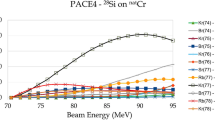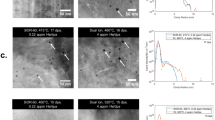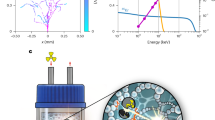Abstract
EXPERIMENTS on the Fermi effect with some rarer elements have given the results summarised below. The neutrons were obtained from sources of radon, in quantities up to 100 millicuries, sealed in small glass tubes with powdered beryllium, and the radioactivity produced was measured with a Geiger-Müller counter which had been carefully calibrated with weighed amounts of uranium oxide. To utilise the enhanced activity produced by surrounding source and specimen with hydrogen compounds1 most of the irradiations were carried out in a cavity in the middle of a large block of paraffin wax. The main results obtained are collected in the following table.
This is a preview of subscription content, access via your institution
Access options
Subscribe to this journal
Receive 51 print issues and online access
$199.00 per year
only $3.90 per issue
Buy this article
- Purchase on SpringerLink
- Instant access to full article PDF
Prices may be subject to local taxes which are calculated during checkout
Similar content being viewed by others
References
Fermi et al., Ric. Scient., V, 2, 7–8; 1934.
Fermi, D'Agostino, Amaldi, Pontecorvo and Segré, ibid., Jan. 1935.
Marsh, J. Chem. Soc., 1972; 1934.
Hevesy, NATURE, 135, 96; Jan. 19, 1935.
Author information
Authors and Affiliations
Rights and permissions
About this article
Cite this article
SUGDEN, S. Radioactivity of some Rarer Elements produced by Neutron Bombardment. Nature 135, 469 (1935). https://doi.org/10.1038/135469a0
Issue date:
DOI: https://doi.org/10.1038/135469a0
This article is cited by
-
Eine langlebige Terbium-Aktivit�t
Die Naturwissenschaften (1943)
-
Action of Slow Neutrons on Rare Earth Elements
Nature (1936)
-
Artificial Radioactivity of the Rare Earth Elements
Nature (1935)
-
Artificial Radioactivity of Dysprosium and other Rare Earth Elements
Nature (1935)



